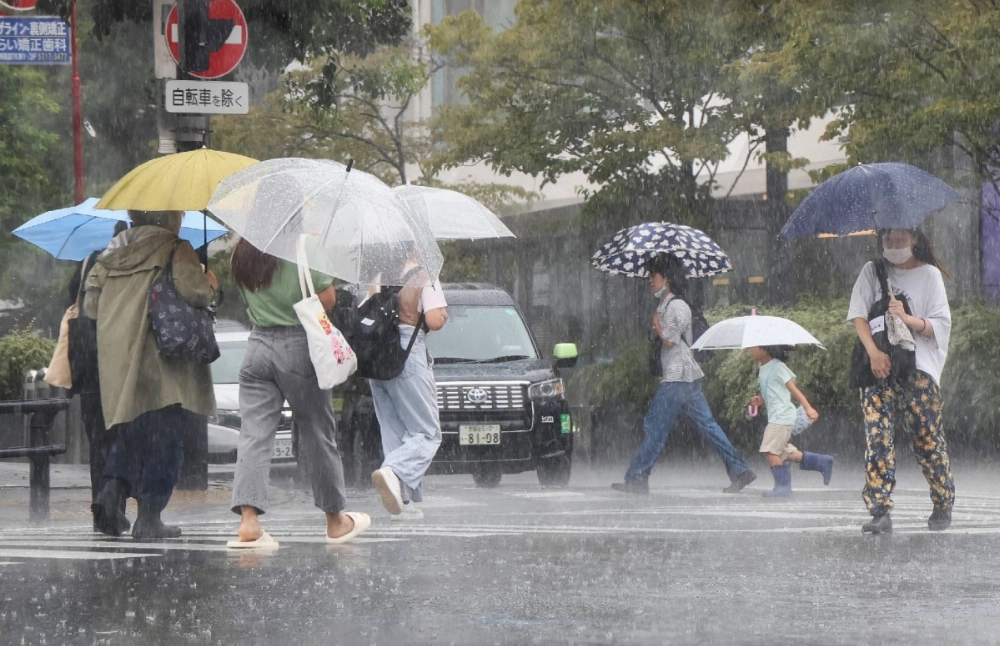The devastating winds of Shanshan were 26% more likely due to climate change, a rapid analysis by Imperial College London has found.
Separately, a Japan-based expert on severe storms said that climate change can at least partly explain why Shanshan, which made landfall as a powerful typhoon in Kagoshima Prefecture on Thursday morning and is slowly moving eastward across Japan, has brought torrential and long-lasting rainstorms.
“It’s undeniable that global warming has raised temperatures on the ocean surface and in the sea,” said Kosuke Ito, associate professor and extreme weather expert at Kyoto University and Yokohama National University. “Typhoons get their energy from vapor arising from the warm ocean. So the higher ocean surface temperatures are, the more energized the typhoons become.”
Compared with the 1980s, ocean surface temperatures have increased by 1 degree Celsius, he said, noting that a degree of warming translates to a 7% surge in the volume of water vapor, as well as a decrease in a typhoon’s central pressure by around 10 hectopascals. The lower the central pressure, the more intense typhoons become.
The central pressure and maximum wind speeds of typhoons are determined by a confluence of factors that include atmospheric conditions, so global warming alone cannot explain the ferocity of such storms, Ito said, noting that reliable data over the past 40 years has not shown that typhoons themselves have grown more powerful in the Western Pacific region. But it is clear that warming has caused typhoons to unleash more rain, he added.
As of Friday at 1 p.m., Shanshan, called Typhoon No. 10 by the Meteorological Agency, was near the city of Yanai in Yamaguchi Prefecture, moving slowly with a central pressure of 980 hectopascals, having weakened from Wednesday, when the pressure at one point plummeted to a very low 935 hectopascals. The storm is now classified as a tropical storm, but it is still delivering heavy rain across Japan.
On Friday, as downpours continued, authorities were confirming the scale of damage and injuries so far, with at least four people killed and 104 injured as of 2 p.m., according to NHK. The storm also led to widespread power outages and transportation disruptions.
In addition, the snail’s pace at which Shanshan is moving across Japan — a factor that could escalate the risk of flooding and landslides — is partially attributable to global warming, according to Ito.
Westerlies — the permanent winds that blow from west to east in middle altitudes — have moved to the north of Japan due to the warming of the ocean temperatures in the Sea of Japan. Data from the Meteorological Agency shows that Sea of Japan temperatures in mid-August, before Shanshan approached, were 2 to 3 C higher than in a normal year, and even 5 degrees higher in waters near the Korean Peninsula.
“Global warming alone cannot account for a rise of 5 degrees, so other weather conditions such as the lack of clouds that block sunlight are likely to have played a role,” he said. “But the reason Shanshan has stayed put and not moved as quickly is because it cannot be carried by the westerlies.”
As global warming continues, slow-moving typhoons will become more common due to such changes in the position of the westerlies, he added.
“What happens then is that we will see prolonged downpours, like what’s happening this time,” Ito said. “It means we need to be on higher alert for heavy rain.”
Meanwhile, Imperial College London, using real-time analysis, said Friday that the maximum wind speeds of Shanshan were estimated to have become 7.5% more intense due to climate change.
The scientists arrived at the estimate by using “synthetic storm tracks” produced by the college’s storm modeling system. These tracks map tropical cyclones from formation to landfall, describing how powerful the winds are at each stage of the typhoon’s life.
The data was then used to estimate how events similar to Shanshan would have been without climate change, where global temperatures would be 1.3 C cooler, according to the scientists.
The results show that devastating typhoons affecting Kyushu like Shanshan have become 26% more likely due to climate change, they said.
“Typhoon Shanshan has been supercharged by climate change,” Ralf Toumi, director of the Grantham Institute — Climate Change and the Environment at Imperial College London.
“Without phasing out fossil fuels, the root cause of climate change, typhoons will bring even greater devastation to Japan.”




















With your current subscription plan you can comment on stories. However, before writing your first comment, please create a display name in the Profile section of your subscriber account page.